Instruction
Biomechanics and their affect on swing plane
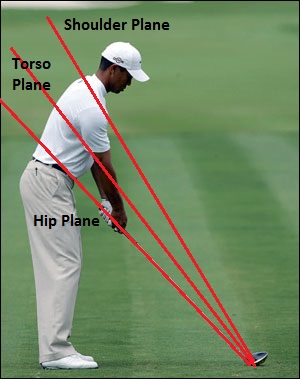
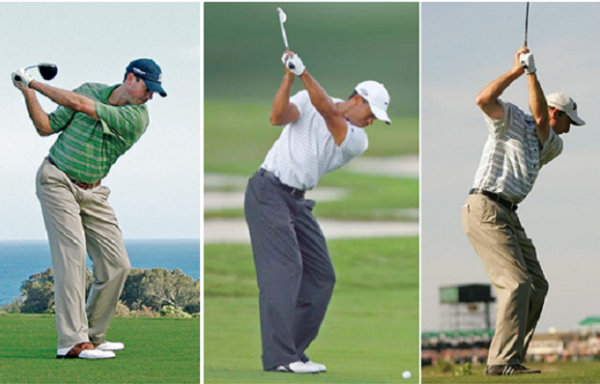
Every golfer is unique, and this individuality has to do with biomechanics. It’s a well known fact that many scientists and biomechanists have understood for many years, however, it is something that many golf professionals have still not accepted.
There are many methods and styles of teaching in our business and the variations are endless: Stack and Tilt v. Jimmy Ballard, Sean Foley v. Hank Haney and on and on. I’m NOT saying for one second that any of these great instructors are wrong, because they have all been immensely successful and the beautiful thing is that they are all correct in their method. The problem is that certain methods are not right for everyone. The differences in each person’s biomechanics is what this article is about, more specifically how biomechanics relates to swing plane.
Everything I will refer to in this article has been proven by science and by golf biomechanists, and is taken directly from BioSwing Dynamics, which was developed by Mike Adams and E.A. Tischler. I am lucky enough to have these two as mentors during my BioSwing Dynamics certification, and I would like to thank them immensely for their help in my growth as an instructor and for their help in editing this article.
There are three different top of the backswing planes and three different downswing planes. At the top of the backswing, the golfer can achieve a position that aligns the lead arm either above the shoulder line (high-plane), through the shoulder line (mid-plane) or below the shoulder line (low-plane). This is shown explicitly in the picture above of Matt Kuchar, Tiger Woods and Jim Furyk when they are at the top of their backswing. During the downswing the golfer will deliver the club along the hip plane (also known as the shaft plane), the torso plane or the shoulder plane.
The backswing plane and downswing plane may vary based upon the two tests you will be introduced to in this article. I will also refer to PGA Tour players as an example, which were tested by Mike Adams during the research portion of BioSwing Dynamics. Just like there are many different methods of teaching, there are many different “looks” of a golfer: David Toms, Martin Kaymer, Charl Schwartzel, Hunter Mahan, Ernie Els, etc. By understanding these simple principles, you will better understand how your biomechanics will affect your individual swing. So, let’s get started.
Needless to say, the backswing is an important part of the golf swing because it will help prepare the swing for proper use of leverage in the swing. It also positions you for a well-executed transition into the delivery slot during the downswing. In order to test what backswing plane fits your body, you need to perform the following test (you will need a partner):
- Stand up and hold your arms stretched out at shoulder height.
- Have someone measure your wingspan from finger tips on the right hand to finger tips on the left hand.
- Have your helper measure your height.
- If your wingspan and height are the same lengths, then you will have a top of the backswing position that aligns the lead arm through your trailing shoulder. This is much like what is taught in one-plane theories.
- As the wingspan becomes longer than the height, the lead arm will elevate more above the shoulder line into what has been described as a two-plane position at the top of the backswing.
- If the wingspan is shorter than the height, the lead arm will align below the shoulder line at the top of the backswing in what is commonly called a flat backswing.
Keep in mind that that there is a range in which the lead arm will be set at the top of the backswing. If the wingspan is, say, 4 inches shorter than the height, the lead arm will set very low across the chest and below the shoulder line. If the wingspan is, say, 4 inches longer than the height, then the lead arm will set well above the shoulder line into a high two-plane type of alignment.
Simply put, the alignment of the lead arm in relations to the shoulder line at the top of the backstroke needs to match the relationship between the length of the wingspan and the height of the golfer. Please refer to the pictures below as a reference to measuring wingspan and height.
Now, how the golfer swings to that top-set position will vary from golfer to golfer. For example, some golfers will swing inside and then elevate upward like Sam Snead, Bruce Lietzke and Matt Kuchar. Others will swing up along an outside path, like Fred Couples and Lee Trevino, and then loop the club into the top-set before transitioning into the slot. Then there will be golfers that seem to swing up the same path they will eventually slot along during the downswing. This is based upon how the arms fold in the backswing. There will be a follow up article explaining the different ways a person can fold the trail arm and how it relates to the backswing.
Examples of Hip-Planers in the takeaway are Matt Kuchar and Jason Dufner. Examples of Torso-Planers in the takeaway are Hunter Mahan or Rory McIlroy. Examples of Shoulder-Planers in the takeaway are Charl Schwartzel and Martin Kaymer. Each of these players are excellent ball strikers, but they each have their own individual ways of swinging the golf club that is based upon their body.
How do you test to see what downswing plane fits your body’s mechanics? To figure that out, measure your forearm from the middle knuckle to the elbow and then measure the upper arm from the elbow to the shoulder socket. Please refer to the pictures above that show how this is measured. Based upon their relationship, you will swing on one of the three swing planes we discussed earlier. Here are your three options:
- Hip-Plane Downswing: The distance from the middle knuckle to forearm is SHORTER than the distance from the elbow to the shoulder socket.
- Torso-Plane Downswing: The distance from the middle knuckle to forearm is EQUAL TO the distance from the elbow to the shoulder socket.
- Shoulder-Plane Downswing: The distance from the middle knuckle to forearm is LONGER than the distance from the elbow to the shoulder socket.
The easiest way to think about this is that if the forearm is longer than the upper arm, the hands will ride higher and farther out, so they should come down on a steeper plane than if they were shorter. If the upper arm is longer and the forearm is shorter, then the hands will ride lower and closer to the body. That will produce a more shallow delivery plane. Here are some more examples of PGA Tour players and how they swing.
- Hip-Plane Downswing: Heath Slocum
- Torso-Plane Downswing: Ernie Els, Hunter Mahan, Adam Scott
- Shoulder-Plane Downswing: Martin Kaymer, Camilo Villegas, John Senden
Martin Kaymer is a perfect example of how getting out of your proper swing plane can affect your performance. In 2010, Martin was playing the best golf of his career. He had won the PGA Championship, and shortly after his runner-up finish in the 2011 WGC-Accenture Match Play Championship he became the No. 1-ranked player in the Official World Golf Rankings. He lost the No. 1 spot 8 weeks after to Lee Westwood.
With his decline in the world rankings, we can see definite changes in his swing that have proven to be mismatched to his body mechanics. When he won, Kaymer was swinging the club down on the shoulder plane like he tests out to be. He and his instructor decided to work on getting the club lower and closer, delivering it down the hip-plane, which is how most instructors at the time thought the golf swing should be swung. He quickly fell in the rankings until late 2012, when he went back to working on retooling his swing. In studying his swing we have found that his swing plane is getting closer to where it was in the 2009 and 2010 seasons when he was playing his best golf. And guess what? We are starting to see the name Martin Kaymer on leaderboards again.
Matching the planes of both the backswing and downswing with the appropriate hip movement and wrist hinge will help golfers tremendously. Proper wrist hinge and the matching of a golfer’s hip movement to his or her setup will be discussed in future articles, as I want you to properly understand this first. Realizing that your individual body mechanics can and will influence the golf swing is the first step in a much bigger picture that will take your game to new levels.
- LIKE233
- LEGIT35
- WOW35
- LOL15
- IDHT10
- FLOP11
- OB12
- SHANK36
Instruction
The Wedge Guy: The easiest-to-learn golf basic

My golf learning began with this simple fact – if you don’t have a fundamentally sound hold on the golf club, it is practically impossible for your body to execute a fundamentally sound golf swing. I’m still a big believer that the golf swing is much easier to execute if you begin with the proper hold on the club.
As you might imagine, I come into contact with hundreds of golfers of all skill levels. And it is very rare to see a good player with a bad hold on the golf club. There are some exceptions, for sure, but they are very few and very far between, and they typically have beat so many balls with their poor grip that they’ve found a way to work around it.
The reality of biophysics is that the body moves only in certain ways – and the particulars of the way you hold the golf club can totally prevent a sound swing motion that allows the club to release properly through the impact zone. The wonderful thing is that anyone can learn how to put a fundamentally sound hold on the golf club, and you can practice it anywhere your hands are not otherwise engaged, like watching TV or just sitting and relaxing.
Whether you prefer an overlap, interlock or full-finger (not baseball!) grip on the club, the same fundamentals apply. Here are the major grip faults I see most often, in the order of the frequency:
Mis-aligned hands
By this I mean that the palms of the two hands are not parallel to each other. Too many golfers have a weak left hand and strong right, or vice versa. The easiest way to learn how to hold the club with your palms aligned properly is to grip a plain wooden ruler or yardstick. It forces the hands to align properly and shows you how that feels. If you grip and re-grip a yardstick several times, then grip a club, you’ll see that the learning curve is almost immediate.
The position of the grip in the upper/left hand
I also observe many golfers who have the butt of the grip too far into the heel pad of the upper hand (the left hand for right-handed players). It’s amazing how much easier it is to release the club through the ball if even 1/4-1/2″ of the butt is beyond the left heel pad. Try this yourself to see what I mean. Swing the club freely with just your left hand and notice the difference in its release from when you hold it at the end of the grip, versus gripping down even a half inch.
To help you really understand how this works, go to the range and hit shots with your five-iron gripped down a full inch to make the club the same length as your seven-iron. You will probably see an amazing shot shape difference, and likely not see as much distance loss as you would expect.
Too much lower (right) hand on the club
It seems like almost all golfers of 8-10 handicap or higher have the club too far into the palm of the lower hand, because that feels “good” if you are trying to control the path of the clubhead to the ball. But the golf swing is not an effort to hit at the ball – it is a swing of the club. The proper hold on the club has the grip underneath the pad at the base of the fingers. This will likely feel “weak” to you — like you cannot control the club like that. EXACTLY. You should not be trying to control the club with your lower/master hand.
Gripping too tightly
Nearly all golfers hold the club too tightly, which tenses up the forearms and prevents a proper release of the club through impact. In order for the club to move back and through properly, you must feel that the club is controlled by the last three fingers of the upper hand, and the middle two fingers of the lower hand. If you engage your thumbs and forefingers in “holding” the club, the result will almost always be a grip that is too tight. Try this for yourself. Hold the club in your upper hand only, and squeeze firmly with just the last three fingers, with the forefinger and thumb off the club entirely. You have good control, but your forearms are not tense. Then begin to squeeze down with your thumb and forefinger and observe the tensing of the entire forearm. This is the way we are made, so the key to preventing tenseness in the arms is to hold the club very lightly with the “pinchers” — the thumbs and forefingers.
So, those are what I believe are the four fundamentals of a good grip. Anyone can learn them in their home or office very quickly. There is no easier way to improve your ball striking consistency and add distance than giving more attention to the way you hold the golf club.
More from the Wedge Guy
- The Wedge Guy: Golf mastery begins with your wedge game
- The Wedge Guy: Why golf is 20 times harder than brain surgery
- The Wedge Guy: Musings on the golf ball rollback
- LIKE85
- LEGIT13
- WOW6
- LOL1
- IDHT0
- FLOP4
- OB1
- SHANK8
Instruction
Clement: Stop ripping off your swing with this drill!

Not the dreaded headcover under the armpit drill! As if your body is defective and can’t function by itself! Have you seen how incredible the human machine is with all the incredible feats of agility all kinds of athletes are accomplishing? You think your body is so defective (the good Lord is laughing his head off at you) that it needs a headcover tucked under the armpit so you can swing like T-Rex?
- LIKE0
- LEGIT2
- WOW2
- LOL0
- IDHT0
- FLOP0
- OB0
- SHANK2
Instruction
How a towel can fix your golf swing

This is a classic drill that has been used for decades. However, the world of marketed training aids has grown so much during that time that this simple practice has been virtually forgotten. Because why teach people how to play golf using everyday items when you can create and sell a product that reinforces the same thing? Nevertheless, I am here to give you helpful advice without running to the nearest Edwin Watts or adding something to your Amazon cart.
For the “scoring clubs,” having a solid connection between the arms and body during the swing, especially through impact, is paramount to creating long-lasting consistency. And keeping that connection throughout the swing helps rotate the shoulders more to generate more power to help you hit it farther. So, how does this drill work, and what will your game benefit from it? Well, let’s get into it.
Setup
You can use this for basic chip shots up to complete swings. I use this with every club in my bag, up to a 9 or 8-iron. It’s natural to create incrementally more separation between the arms and body as you progress up the set. So doing this with a high iron or a wood is not recommended.
While you set up to hit a ball, simply tuck the towel underneath both armpits. The length of the towel will determine how tight it will be across your chest but don’t make it so loose that it gets in the way of your vision. After both sides are tucked, make some focused swings, keeping both arms firmly connected to the body during the backswing and follow through. (Note: It’s normal to lose connection on your lead arm during your finishing pose.) When you’re ready, put a ball in the way of those swings and get to work.

Get a Better Shoulder Turn
Many of us struggle to have proper shoulder rotation in our golf swing, especially during long layoffs. Making a swing that is all arms and no shoulders is a surefire way to have less control with wedges and less distance with full swings. Notice how I can get in a similar-looking position in both 60° wedge photos. However, one is weak and uncontrollable, while the other is strong and connected. One allows me to use my larger muscles to create my swing, and one doesn’t. The follow-through is another critical point where having a good connection, as well as solid shoulder rotation, is a must. This drill is great for those who tend to have a “chicken wing” form in their lead arm, which happens when it becomes separated from the body through impact.
In full swings, getting your shoulders to rotate in your golf swing is a great way to reinforce proper weight distribution. If your swing is all arms, it’s much harder to get your weight to naturally shift to the inside part of your trail foot in the backswing. Sure, you could make the mistake of “sliding” to get weight on your back foot, but that doesn’t fix the issue. You must turn into your trial leg to generate power. Additionally, look at the difference in separation between my hands and my head in the 8-iron examples. The green picture has more separation and has my hands lower. This will help me lessen my angle of attack and make it easier to hit the inside part of the golf ball, rather than the over-the-top move that the other picture produces.


Stay Better Connected in the Backswing
When you don’t keep everything in your upper body working as one, getting to a good spot at the top of your swing is very hard to do. It would take impeccable timing along with great hand-eye coordination to hit quality shots with any sort of regularity if the arms are working separately from the body.
Notice in the red pictures of both my 60-degree wedge and 8-iron how high my hands are and the fact you can clearly see my shoulder through the gap in my arms. That has happened because the right arm, just above my elbow, has become totally disconnected from my body. That separation causes me to lift my hands as well as lose some of the extension in my left arm. This has been corrected in the green pictures by using this drill to reinforce that connection. It will also make you focus on keeping the lead arm close to your body as well. Because the moment either one loses that relationship, the towel falls.


Conclusion
I have been diligent this year in finding a few drills that target some of the issues that plague my golf game; either by simply forgetting fundamental things or by coming to terms with the faults that have bitten me my whole career. I have found that having a few drills to fall back on to reinforce certain feelings helps me find my game a little easier, and the “towel drill” is most definitely one of them.
- LIKE12
- LEGIT2
- WOW2
- LOL0
- IDHT0
- FLOP2
- OB0
- SHANK8
-

 19th Hole1 week ago
19th Hole1 week agoDave Portnoy places monstrous outright bet for the 2024 Masters
-

 19th Hole2 weeks ago
19th Hole2 weeks agoThings got heated at the Houston Open between Tony Finau and Alejandro Tosti. Here’s why
-

 19th Hole1 week ago
19th Hole1 week agoTiger Woods arrives at 2024 Masters equipped with a putter that may surprise you
-

 19th Hole2 weeks ago
19th Hole2 weeks agoReport: Tiger Woods has ‘eliminated sex’ in preparation for the 2024 Masters
-

 19th Hole3 days ago
19th Hole3 days agoTwo star names reportedly blanked Jon Rahm all week at the Masters
-

 19th Hole3 days ago
19th Hole3 days agoNeal Shipley presser ends in awkward fashion after reporter claims Tiger handed him note on 8th fairway
-

 19th Hole2 weeks ago
19th Hole2 weeks agoAddiction, spinal fusion, and scam artists – Everything Anthony Kim revealed in candid interview with David Feherty
-

 19th Hole2 weeks ago
19th Hole2 weeks agoAnthony Kim says doctors told him that he ‘may not have much time left’ ahead of LIV return

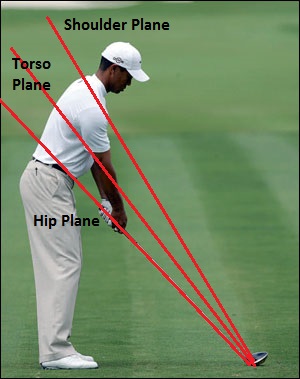
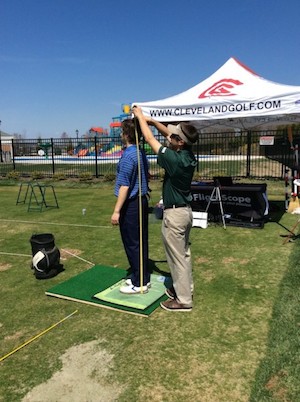
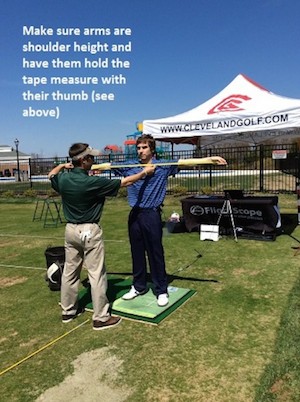
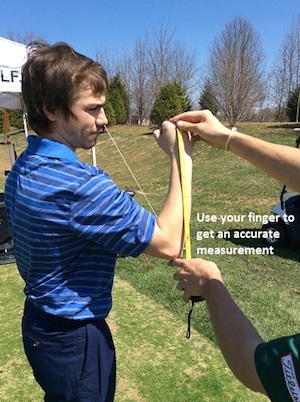
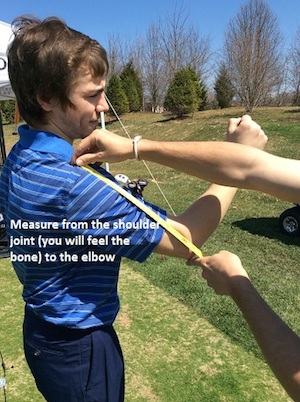
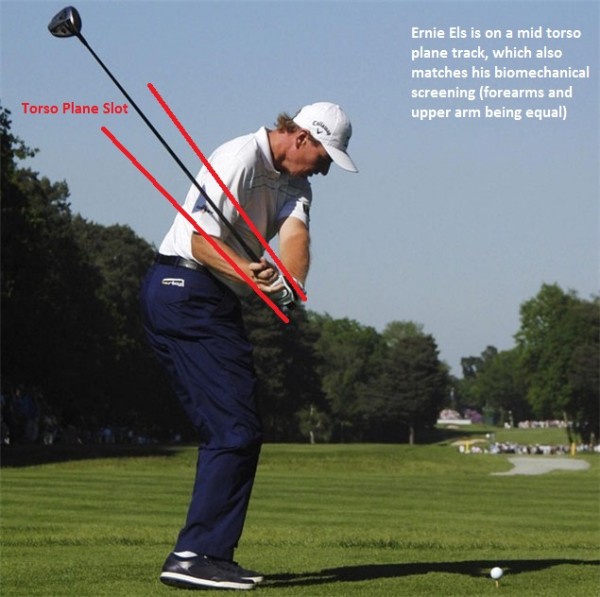
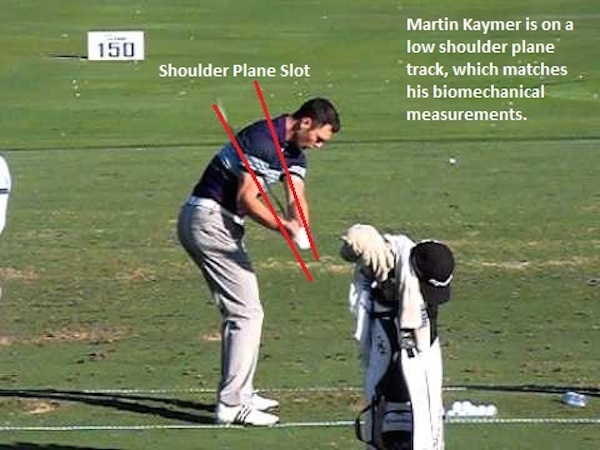
















Pingback: 7 Best Golf Swing Analysis Apps: iPhone, Android, & Free – Golf Span – outgolfed.com
Jay Ferguson
Jun 15, 2022 at 5:23 pm
This sounds like a lot of bro science
Wilson
Dec 5, 2016 at 7:13 pm
Hey Michael, just found this article. Very interesting stuff. What plane would you say Jason Dufner comes down on?
Thanks!
Mj
Nov 25, 2017 at 1:16 pm
What about the hand plane. ? The most important plane imo.
If this is bio mechanical the club should not even be in the picture. Agreed?
Thank you for this article. Just found it
Mbwa Kali Sana
Aug 16, 2016 at 8:58 am
In m’y opinion ,you fin d your own swing by yourself ,swinging in front OF a mirror ,and checking THE positions ,together with measuring THE speed OF THE clubface with a swing speed radar .
By trial and error ,you discover what suits you best .
Toby Zabel
Jun 23, 2015 at 8:13 pm
Michael,
So does this mean that shoulder planers are more suited to hitting cuts and taking large divots, and hip planers are more suited to hitting draws and taking smaller divots, and torso planers are in between?
kyle
Nov 19, 2014 at 10:31 pm
I feel dumb but if my wingspan is greater than height it means?
Ewan S Fallon
Nov 17, 2014 at 3:57 pm
Instead of getting measured etc. why not just try different swing planes, and adopt the one which feels and scores best? Amen!
Joe
Sep 17, 2015 at 8:56 am
I guess if its that easy for you to switch planes you can do that. For me any change is going to take a lot of work.
woody
Jul 27, 2014 at 11:16 am
Hi, and thank you for a very interesting article but I am now really confused, my wingspan is 3 inches longer than mu height but my forearm is 1 inch shorter than my upper arm, do these findings contradict each other thereby leaving me with no option but to take up cricket yuk!!!!
woody
Jul 27, 2014 at 11:14 am
Hi, very interesting article but I am now really confused, my wingspan is 3 inches longer than mu height but my forearm is 1 inch shorter than my upper arm, do these findings contradict each other thereby leaving me with no option but to take up cricket yuk!!!!
Gary
May 5, 2014 at 11:08 am
Mike,
I’ve read the article in Golf Magazine, and it contradicts what you’re saying. The article doesn’t mention anything about measuring your wingspan and forearm. It tells you to look in a mirror and check your elbow position when it starts to fold. According to the article I’m a torso swing plane and by my measurements I have a shoulder plane swing. My wingspan is the same as my height and my forearm is longer than my upper arm. Could you tell me which is correct.
Michael Wheeler
May 16, 2014 at 2:36 pm
Gary, that is a different test. The BioSwing Dynamic certification has several tests and these three (right arm folding test, wingspan test, and forearm/upper arm test) are only a few of them. The wingspan test tells us if the golfer should be more rotary or lateral in their motion, and the forearm to upper arm measurement explains which plane you should use in the downswing. The test that Mike and EA are talking about in GOLF Magazine is for backswing and how you should release the golf club. If you test out to be a torso planer with that test moving the hands to the right (the GOLF Magazine article) and your forearm is longer (shoulder plane downswing) your body will want to swing the club back on the torso plane and then down on the shoulder plane. There are nine different combinations, but that would be your pattern if you test out to be a “side on” golfer and the forearm is longer than the left. I am that pattern as well for example.
Don’t confuse the two tests. Mike and EA wrote an article last year about the wingspan and forearm tests, and the current article they wrote in May 2014 is about backswing and using the proper release to match your biomechanics.
If you have any other questions about your measurements from Mike’s article and the wingspan and forearm tests please feel free to shoot me an email. My contact information is on my website (www.michaelwheelergolf.com).
Paul
Apr 30, 2014 at 6:23 pm
Great article Michael.
My wingspan is 6ft2, my height is 6ft4. So I should be a hip planer.
However, my knuckle to elbow is LONGER than my elbow to shoulder just slightly (39.5mm to 37.5mm), which says I should be a shoulder planer.
Where should I be?
Thanks
Paul
EA Tischler
May 1, 2014 at 9:19 pm
Paul, the wingspan being 2 inches shorter than your height will make the most efficient alignment of the lead arm in what we call low mid-track or high-low track. It depends on how much rounding forward you have in your address posture. Keep in mind that the tests narrow down the range in which the lead arm will be aligned at the top of the backswing. As a general description that means the lead arm will swing across your chest and through the lower part of your shoulder line. Your forearm being longer than you lead arm by 2mm would make you a torso-planer while slotting during the downswing. It would slot above the middle of the torso-plane zone. So, keep in mind that one test is for the track during the backswing and the other is for the track during delivery.
GolferX
Apr 24, 2014 at 4:11 pm
Having a baseball background, I can understand that each one of us has a swing that is going to be different; now that is proven by this article describing the use of biomechanics. However, what biomechanics can’t tell us is what if anything can be done if we are the outlier in the group. What if we are the one exception to the rule? That is where practice and getting to know your swing ala Hogan or Moe Norman. When I played baseball, we still used wooden bats and I found that by simply lowering my hands about two inches, I was able to get to those fastballs that were my weakness, it simply took the willingness to learn about myself and my swing.
Kirk
Apr 24, 2014 at 3:05 pm
Great article! I just want to be clear about the height measurement and if it should be taken in golf shoes, or barefoot? Again, great article.
Tyler
Apr 24, 2014 at 11:17 am
Great Article Mike. I was trying to locate the Mike Adams article on the golf magazine website and had no luck. Do you know the name of the article?
Michael Wheeler
Apr 24, 2014 at 12:03 pm
It may not be online yet, as it is in stores in the current May issue of GOLF Magazine. Tiger is on the cover…
AIPM
Apr 23, 2014 at 2:06 pm
Fantastic article. Definitely looking forward to the second part.
A few questions though. Would this make any difference in putting, or is everything too stationary and the movement too small to have any real effect? I’m sure short game and bunker play could be affected by this though, so will this be addressed in future articles? Finally, are all three downswing planes able to have club path adjusted in order to shape shots both ways as well as attack angle, or only the torso plane?
Greg
Apr 23, 2014 at 11:32 am
Michael,
Great article. How far off should the two measurements be to bump you into the outside categories? I’m 72 inches tall with a 71 inch wing span which doesn’t seem like much difference. My forearms however are a full 2 inches shorter so that seems like I clearly need to be on the hip plane.
Also is there anyway to find a certified instructor locally (Richmond, VA)?
Michael Wheeler
Apr 23, 2014 at 8:27 pm
I would take a ride up to visit Mike Adams if I were you. He is in southern NY, and not crazy far from Richmond. You will get a lot of great information from the trip and would be well worth it. There are also several instructors in Baltimore. I’ll see if there are more close to you, but a trip to Mike would be well worth it if you can get in with him!
Jordan V
Apr 23, 2014 at 8:00 am
Great article. Can’t wait for the follow-up articles. I have always struggled to find a comfortable backswing. My measurements were about 2″ longer with the wingspan and 2″ longer with the forearm. I have always tried to keep my backswing and downswing plane lower, and I see now that I have been fighting my biomechanics. One question is with 2″ longer on both measurements, would I be a low shoulder plane, or just above the torso plane?
Michael Wheeler
Apr 23, 2014 at 8:25 pm
There is no need for a follow up article… Mike Adams and EA Tischler recently wrote a great article in GOLF Magazine this month, which is the cover story with Tiger on the cover. Make sure to check out that article; a lot of great information!
To answer your specific question Jordan, since your forearm is 2″ longer, than you will be a shoulder planer. You will be pretty close to the top line. I am the same as you, as my forearm is 2″ longer also. That would definitely be why you will struggle more in a lower plane. Glad I could help…
Tyler
Apr 24, 2014 at 11:21 am
Great Article Mike. What is the name of the article as I cannot find it on the Golf magazine websire.
JD
Apr 23, 2014 at 7:41 am
Hi. Very good article and as a teaching pro I understand the importance and relevance of these measurements. Although all the examples are great with players matching their measurements what about the opposite?
Are there successful players that have been tested that have swung the club on a plane that does not match their measurements. I think of a few tour players who’s golf swings have changed over the years but their physical measurements have not. Tiger being one example.
Josh
Apr 23, 2014 at 7:36 am
As with all new golf instruction theories, I tend to first be skeptical. Michael, this is an interesting read, but all you did was give us some rules for choosing a swing plane without any bio mechanical proof as to why. Other than saying that someone else did the research, we are all certified, here are a few pro names that match our research as proof.
Why are these rules as such, biomechanically speaking? How were the studies done to come to these conclusions? Is there any room for bending these rules when it comes to my backswing and downswing plane?
Apologies if I sound confrontational, but too many times golf instructors have the ‘solution’ to everything, and I think as golfers we need to question a little more instead of following blindly and jumping from trend to trend.
Tony
Apr 23, 2014 at 1:50 pm
I’m in the same boat as Josh. Would love to see a follow up here.
ParHunter
Apr 23, 2014 at 4:16 pm
I would like to see some explanation as well. I find it non-intuitive that long arms should lead to a more upright backswing. Isn’t it the case that a longer club (e.g. the driver) leads to a flatter swing than with a shorter club (e.g. A wedge). So I would expect the opposite, that long arms lead to a flatter swing and short one to a more upright.
Philip
Apr 23, 2014 at 5:24 pm
Except that in golf a lot of things tend to be opposite of what common sense dictates. Which I suspect is the result of the golf swing being the combination of multiple gear and lever actions via our body and limbs.
Dave
Apr 30, 2014 at 8:19 am
I had exactly the same thought. With longer arms, wouldn’t the arms start at address further from the body and then work around the spine on a flatter plane?
TheFightingEdFioris
Apr 23, 2014 at 11:06 pm
There is a great (but lengthy) video on YouTube of Mike Adams speaking, and explaining this theory, at the PGA Show. In my opinion it’s a must-watch.
https://www.youtube.com/watch?v=fZz06H-3SSA
Stretch
Jun 2, 2014 at 4:32 pm
Just watched it. A must watch as well as a pdf available,
http://mikeadamsgolf.com/wp-content/uploads/2012/07/Cover_Swing_Tracking1.pdf
EA Tischler
May 1, 2014 at 11:51 pm
Josh, many professional golfers have won using techniques that fail to fit their body mechanics. They are talented enough, and as long as they can manage ball flight, scramble well and have great strokes gained numbers then they can win. However we see hoards of injuries in golfers, including professionals that are extremely fit, when they develop swings that fail to match their biomechanical design. Let me also make it clear that there is a golfers biomechanical design that defines the parameters of the structural concerns, and there are zones of employment for those structural concerns, there are dynamic condition concerns that tell us what techniques work better for each golfer, and there are functional condition concerns that show of the golfers functional limitations.
EA Tischler
May 2, 2014 at 12:02 am
Josh, let me make one more comment. The approach that Mike and I use are not new, we have been using them for over 20 years. We found them independent of eachother, did cross referencing, worked with doctors, kinesiologist, biomechanists, etc that have helped confirm much of our findings. Their is a group out of Japan finding many of the same patterns within their biomechanical approach as well. There are a variety of researchers out there confirming our findings with their own independent research. And ultimately that is what it takes for people to truly believe. For over 20 years I have been coaching the values and applications of vertical ground force. Only in the last year has there been outside independent research confirming how it works. Dr David Wright is doing great research now and has outside groups gathering independent data to test what he has already confirmed in his research about the relationship between upper arm to lower arm length relationships, core area activation and downswing slotting zones. And it all confirms what Mike and I found a couple decades ago independent of each other. By the way there are other tests the cross reference the basic tests listed in the article. The ones in the article are simply the easiest ones to demonstrate. What have both stress tests and measurement tests.
Jared L.
Apr 22, 2014 at 11:45 pm
Hey I just checked some video of my swing for a couple months back.. and I did the numbers that you said and my back swing is “If the wingspan is shorter than the height, the lead arm will align below the shoulder line at the top of the backswing in what is commonly called a flat backswing”
and my downswing is shoulder plane.. now quick question.. it sounds to me that those two together would be a fade swing right? going from flat backswing then bringing the shoulders down and to the inside? I ask cause it feels more of a natural swing to fade the ball for me (lefty) than a draw. thanks! great read!
Philip
Apr 22, 2014 at 11:06 pm
I am so waiting for the next article.
This year (finishing my 3rd month) I decided to rebuild my swing myself using a virtual simulator facility (lots of snow and ice) instead of lessons because I wanted to understand why I should do things instead of repeating exercises, but even more importantly make sure what I was doing worked for my swing (which I called a bio-mechanical swing by chance). This week I finally accepted that my backswing and downswing were different and that I have my best effortless swing when I do not try to make my backswing match my downswing.
My downswing is a torso plane swing and I noticed that if I try to have an one-plane backswing I had to loop it and place my club head above and beyond the ball. Not too consistent so I decided to just combine the two and widen my stance a bit which opened up my ability to pivot on my spine properly instead of swaying (I always fought a reverse C with longer clubs). I can now transfer my weight to my front foot with faster club head acceleration.
My measurements
* slightly (2″ with shoes on) longer arm span than height, which is normal for my family
* arm – both measure the same
Thanks for the article – perfect timing for me.
Philip
Apr 25, 2014 at 12:15 am
Follow-up
Picked up GOLF Magazine after reviewing the article. Fills in the last pieces to me understanding my swing perfectly, as well as help me understand some issues I had from lessons to eliminate my slice and lack of club head speed when I hit a ball versus my practice swing.
As a bonus, it helped me finally grasp the missing part of my setup requiring me to hold the club head above the ball. I got into the top of my backswing (using the article) and tried to move closer to the ground – figured that whatever I could move will likely be the proper adjustment – which was me sticking my butt out. I thought I was properly bending at the waist before, but I guess I was just slouching and dropping my arms.
I have gone full circle with my swing – it is now fully determined by locking my setup, loading my backswing around my spine, and firing through to my target line. My journey to playing golf instead of hitting a ball can finally begin.
Thanks again, this information has been so invaluable.
Jared
Apr 22, 2014 at 10:16 pm
Great article. My wing span is two and a half inches shorter than my height, but my forearm is one and a half inch longer than my upper arm. This sounds like it could make for a very odd looking flatter backswing with a more vertical downswing. Would you please be able to name a similar tour player I can use as a reference. Thank you for the great article.
Phil C.
Apr 22, 2014 at 6:44 pm
Good article Michael, you are very clear at explaining the concept of biomechanics and how it would dictate a swing plane. Its funny the timing of this article because I had just changed my swing to groove more to the one-plane swing concept, and with the recent improvement of 12 strokes on my best score I am a newly enthused endorser of all things one-plane.
So when I randomly came across a Mike Adams article while searching for Big Break hotties during lunch time, I spit and scoffed when i read his idea of “blowing the one plane swing theory out the dirt”. [http://mikeadamsgolf.com/wp-content/uploads/2012/07/Cover_Swing_Tracking1.pdf] However, despite my logical and first hand belief that a single plane can deliver more consistent hits, i’m a open to learning more if it makes fundamental sense from a physics point.
The major point is the biomechanics are dictating where the swing plane sits in relation to torso and shoulders. But won’t a change in address hip angles and distance to the ball also adjust these angles in relation to the golfers body? One point in my switch to becoming more “one-plane” was more bend at the hip and wider stance. In each of your former examples if the golfer made the same adjustments they could all have low swing planes like Kuch.
What’s the benefit? If someone like Kucher comes into your class, will you ever come across a moment where you’ll instruct the student, “Hey, I think you should swing more like Senden.” A big forward moment for me was when I realized I no longer needed to “lift” my arms away from my body. The reduction in this up/down movement increased my ball striking consistency greatly; yet in your article you document that Kaymer had the exact opposite experience. Can you explain why? Because honestly it could appear just to be a case of a player returning to a swing he/she grew up with. Your point of biomechanics being the engine for improvement could be debated effectively by stating that he was just returning to his previously grooved and successful swing. Had Kaymer learned a single plane (or any other method for that matter) swing as a youth his coaching direction could be vastly different.
I’d love to hear some thoughts. Just purchased Jim Hardy’s book “Plane Truth” so i can reference if needed.
Michael Wheeler
Apr 22, 2014 at 9:15 pm
Thanks for the response. Simple answer is that if your forearm is 2 inches longer than your upper body why would try to force your plane lower to where that matches someone whose forearm is naturally shorter. When your forearm is longer than the upper arm it will set the club higher and further from the body than someone whose forearm is shorter.
Senden’s swing is different than Kuchar because Senden’s biomechanics are much different than Kuch. They both swing the way they do and are successful because it matches their biomechanics. All of the Tour players have been tested by Mike Adams and EA Tischler during the research for the certification. Martin Kaymer struggled in the lower plane because it did not match his biomechanics as his forearm is much longer than his upper arm.
Jim Hardy is an excellent teacher and is not wrong in his theory of one planers, but for golfers that have wingspans that are 4″ or more longer than their height they may react better to a lateral swing as we call it versus a rotary swing. How the arm sits at the top is dependent on that wingspan versus height number. Each of those tour players do what they do because it’s comfortable and natural to their biomechanics. There are other factors that have to be taken into account that are too many to name (rotation of the forearm for example) that would influence the swing as well. This is where going to an instructor, especially a BioSwing Dynamics certified instructor would benefit anyone.
The entire certification helps us screen the golfer to give us a blueprint of how they should swing. It helps us find a swing that matches the individual and makes it more natural to them, which a response I get most of the time from my students since learning more about BioSwing Dynamics from Mike and EA, amongst many other certified instructors like Ted Sheftic.
nick hanson
Apr 22, 2014 at 4:41 pm
Great article Michael. E.A.’s been my teacher for the last 12 years and I can say with authority that he is the expert on these theories. It’s very cool to finally see it in print at a major publication.
Thanks for the wonderful article.
Nick Hanson
Nick Randall
Apr 22, 2014 at 4:27 pm
Hi Michael, congratulations on a really well written article. I really like the premise and it seems like a nice and tidy formula, I am going to start collecting some data from the students at our golf academy and the Queensland state training squad – will be interesting to see if the numbers match up to the theory for us too.
I was under the impression that the biggest factor involved in downswing plane is your backswing plane, not necessarily your forearm to upper arm ratio. For instance if you take it back steep then it has to come down shallow and vice versa. Would it be possible to get your thoughts on that theory please?
ps. Do you know where we can access the original piece of research?
thanks
Nick
Michael Wheeler
Apr 22, 2014 at 9:00 pm
Nick, the original research is from the BioSwing Dynamics Certification, which belongs to Mike Adams and EA Tischler. However, your comment that if they swing back shallow then down steep and vice versa is not always true. The forearm length vs upper arm length is an absolute for downswing plane and not backswing plane. Backswing plane is checked by another test, but also takes into account other factor such as body size and width. There are 9 swing tracks… The golfer can come back on the hip plane (shaft plane) and then down on either the hip, torso, or shoulder plane; they could come back on the torso plane and then down on either the hip, torso, or shoulder plane; finally they could come back on the shoulder plane and then down on either the hip, torso or shoulder plane. If they come back high then come down low (shoulder backswing to torso downswing as an example) this would be considered a slot swing. If they go the other direction, low to high (hip plane backswing and shoulder plane downswing for example) that would be called a reverse slot swing. As you can see there is a lot more that a certified BioSwing Dynamics Instructor could use to fit the swing to the golfer, but these are a good base of information to see if you are working on the right things.
Hope that answers some questions…